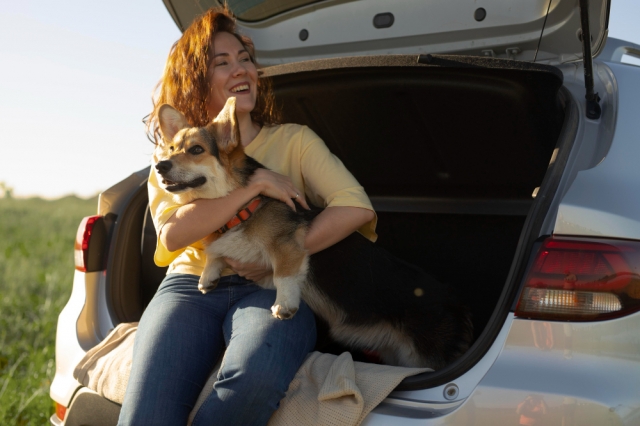Taking your pet on a trip is an excellent way to make lifelong memories. Bringing your pet (or feathers) along may offer a whole new level of enjoyment to your holiday, whether you're heading out for a road trip through a national park or flying off to a beach resort accepting pets. However, it takes a little more preparation and planning to ensure your pet's health and safety while you see new sites. The following are some suggestions that will help you travel with your pet as comfortably and stress-free as possible.
1. Read Up Before You Go
Pet travel is subject to many restrictions and regulations that vary depending on the location. Spend some time learning about the particular criteria for the place you have selected before making any travel or hotel reservations. Are there any health certifications or vaccines required for entry? Exist limitations for specific breeds? It is frequently required to microchip your pet before leaving the country. You may avoid potential delays at the border and save difficulties by being aware of these restrictions in advance.
2. Schedule a Veterinary Visit Before Travel
Make an appointment with your veterinarian well in advance of your travels. Make sure your pet has had all the necessary vaccines, and talk to them about any possible health risks associated with the place you want to visit. For example, your veterinarian can advise you on whether your pet is healthy enough for the exercise if you're planning a hike at a high altitude. In addition, they may talk about any prescriptions or dietary supplements your pet might need while traveling and, if required, issue a health certificate.
3. Select the Ideal Carrier
For the comfort and security of your pet while being transported, the correct carrier is essential. Make sure the airline satisfies the size and ventilation criteria for flights. Select a carrier for your pet that allows them to stand up and turn around easily, whether traveling by vehicle or train. Make sure your pet has a good experience with the carrier once you have it. Allow them to explore and feel at ease by leaving it open in your house with toys and sweets inside. To help your pet become used to being confined, do brief "practice" vehicle rides with them in the carrier.
4. Consider Your Pet's Needs When Packing
Remember the necessities! Carry a dependable food and water bowl with you, as well as enough food and water for the duration of your journey. Include a copy of their medical documents, a leash, waste disposal bags, and their favorite toys. Make sure you bring enough medicine for your pet for the duration of your trip if they require any. When going for lengthier travels, think about bringing along a modest first-aid kit filled with basic pet supplies like gauze, antiseptic wipes, and any prescription drugs.
5. Schedule Rest Stops and Bathroom Breaks
When driving, you have to consider how often your pet has to go pee and get exercise. Consider including pet-friendly rest areas in your route planning. Never, even for a little moment, leave your pet alone in a heated vehicle. Let your pet explore a leash-secure area, take a few laps, and relieve themselves between pauses. It's also crucial to have fresh water on hand and a transportable water bowl.
6. Locate Pet-Friendly Hotels
Fortunately, it's getting more and more common to find hotels and rentals that allow pets. Pet owners may make use of a number of hotel facilities, including designated pet walking spaces, waste disposal stations, and even pet sitting services. Use these facilities if you're thinking of taking a city vacation so your pet can get some exercise and potty breaks. For instance, Denver's downtown is home to a large number of pet friendly hotels Denver, making it easy to explore the Mile High City with your animal buddy.
7. Take Climate into Account
It might be difficult to travel to a place where the weather is drastically different from what your pet is used to. Plan for regular water breaks and steer clear of strenuous exercise during the warmest part of the day if you're traveling somewhere hot. If your pet has short fur, make sure they have a warm coat or sweater with them throughout the winter months.
Conclusion
Compared to traveling alone, traveling with a pet involves a little more planning and flexibility. But the benefits of making enduring experiences with your animal or fowl buddy are priceless. You can make sure that your trip is easy and pleasurable for both of you by paying attention to your pet's health and safety and by using these guidelines.






